
| Indigo Flash (previously known as Thecla varuna) DEUDORIGINI, THECLINAE, LYCAENIDAE, PAPILIONOIDEA | (donherbisonevans@yahoo.com) and Stella Crossley |
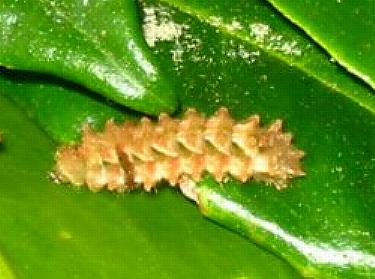
(Photo: courtesy of Bob Miller and Ian Hill)

| Indigo Flash (previously known as Thecla varuna) DEUDORIGINI, THECLINAE, LYCAENIDAE, PAPILIONOIDEA | (donherbisonevans@yahoo.com) and Stella Crossley |

(Photo: courtesy of Bob Miller and Ian Hill)
These Caterpillars are a knobby yellow or green, with a dark dorsal line, and pink or white lines on each side. It has four knobs on each segment, each with an orange tip bearing stiff hairs.

The caterpillars grow to a length of about 2 cms. They feed on the flowers and shoots of various species of plants, including :
The caterpillars have also been suspected of being cannibalistic, attacking each other and attacking the pupae of other indivuals.

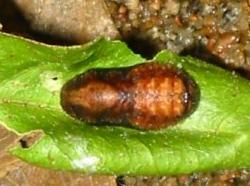
The pupa is brown with darker markings, and is covered in short hairs. Its length is just over 1 cm. It is formed in debris at the foot of a foodplant.
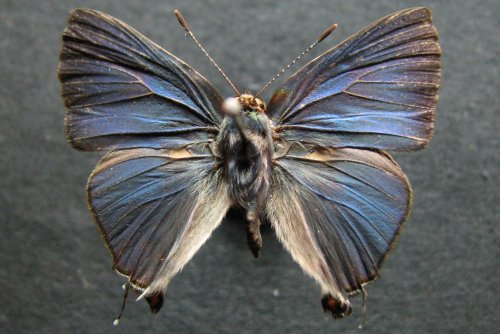
The adult male butterflies are dark purple on top.
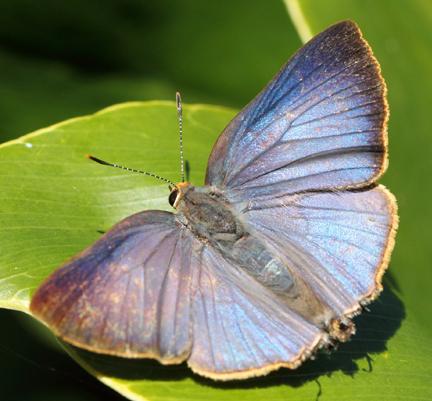
The females are mauve, darkening towards the margin.
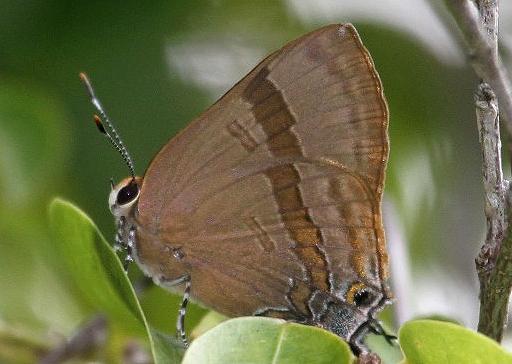
Underneath, both sexes are pale brown, and the wings each have a diagonal darker brown line, often outlined in white. Both sexes of the adult butterfliy have two tails near the tornus of each hind wing: one tail is thin and the other is knobbly. The undersides have a black spot beside each tail. The butterflies have a wing span of about 3 cms.
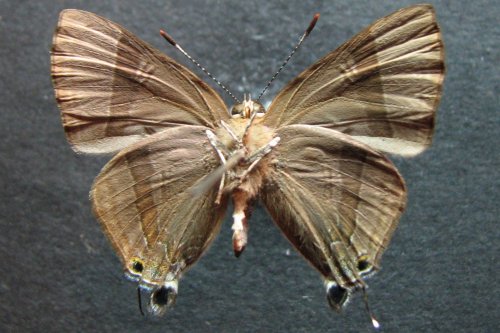
The eggs are pale blue-green and round, with a diameter of about 0.5 cm. They are laid singly on flower buds or young shoots of a foodplant. It is possible that this habit, and the observed cannabalism, keeps the caterpillars to just one individual per plant, which together with the wide variety of plants on which the caterpillars feed, make it harder for parasitic wasps and flies to search for them.
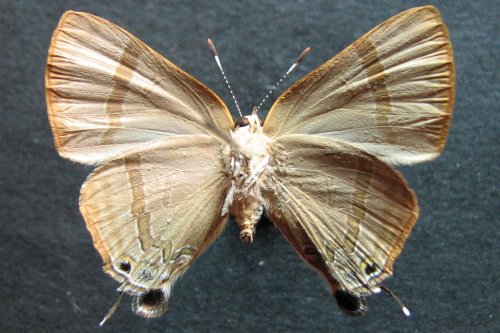
The species occurs as several races across south-east Asia, including
and as simsoni (Miskin, 1874) in Australia along the coast of
Further reading :
Michael F. Braby,
Butterflies of Australia,
CSIRO Publishing, Melbourne 2000, vol. 2, pp. 738-738.
Thomas Horsfield,
Lepidoptera,
Descriptive Catalogue of the Lepidopterous Insects contained in
the Museum of the Horourable East-India Company,
Volume 2 (1829), pp. 91-92, No. 24.
Wesley Jenkinson,
Life history notes, new host plants and new distribution
records for the Indigo Flash, Rapala varuna simsoni
(Miskin, 1874) (Lepidoptera: Lycaenidae),
Butterflies and Other Invertebrates Club,
Metamorphosis Australia,
Issue 104 (September 2022), pp. 2-9.
Frank Jordan & Helen Schwencke,
Create More Butterflies : a guide to 48 butterflies and their host-plants
Earthling Enterprises, Brisbane, 2005, pp. 23, 59.
Helen Schwencke,
Indigo Flash Rapala varuna: what is it with their caterpillars,
Butterflies and Other Invertebrates Club,
Metamorphosis Australia,
Issue 79 (December 2015), pp. 31-32.
 caterpillar |  butterflies |  Lepidoptera |  moths |  caterpillar |
(updated 7 May 2012, 5 August 2024)